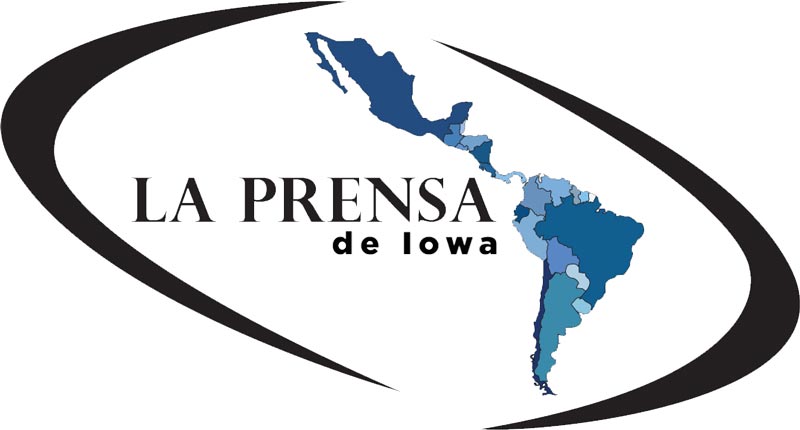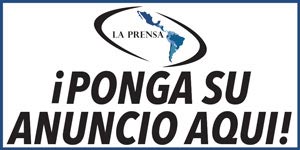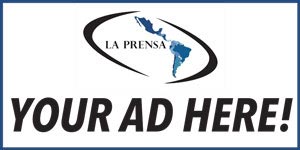Estudiantes a la espera al plan de alivio a sus deudas
/Estudiantes están a la espera de más información en cuanto al Student Debt Relief Plan (Plan de Alivio de la Deuda Estudiantil por su traducción al español) de la administración Biden-Harris y los pasos que siguen. Foto cortesía de Tim Gouw en Unsplash.
Ashley Martínez Torres
Especial para LA PRENSA Iowa
El pasado 24 de agosto, la administración Biden-Harris anunció la extensión a la pausa de préstamos estudiantiles hasta el 31 de diciembre y la cancelación de deuda específica, lo que ha llamado la atención a nivel nacional.
De acuerdo con un comunicado de prensa del Departamento de Educación de los Estados Unidos (U.S Department of Education por su nombre en inglés), el departamento proveerá la cancelación de varias deudas estudiantiles dependiendo de los ingresos anuales de las personas.
Para los deudores que tengan ingresos anuales debajo de $125,000 (por individuo) o $250,000 (para parejas casadas o cabezas de familia) y que además recibieron la Subvención Pell (Pell Grant por su nombre en inglés), una ayuda financiera basada en necesidad que usualmente se les otorga a familias de pocos ingresos, podrán recibir hasta $20,000 en cancelación de deuda. Los deudores que cumplen con estos requisitos, pero no recibieron la subvención Pell, podrán recibir hasta $10,000 en cancelación de deuda.
Alejandro Hernández, 23, originario de Cuba está a la espera del siguiente paso del programa de cancelación de deudas. “Este programa me ayudaría a disminuir mis pagos mensuales, lo que me daría un respiro de mi carga financiera,” dijo.
Alejandro se graduó de Iowa State University (ISU) en el 2021 con un título en Genética. Actualmente trabaja como Técnico Veterinario mientras que estudia una maestría doble en Ciencias Forenses Veterinarias y Fisiología y Farmacología en la Universidad de Florida.
Referente a los préstamos que realizó para pagar sus estudios, Alejandro compartió con este medio que durante sus años en ISU sacó préstamos para pagar la mitad de su colegiatura a pesar de que recibía ayuda financiera por parte de la universidad y la Subvención Pell, sin contar sus gastos personales los cuales costeó teniendo dos trabajos diferentes mientras estudiaba.
“Era la única manera de pagar la universidad,” comentó. “Fue muy difícil balancear mi trabajo con mis estudios durante mi primer semestre ya que estaba trabajando casi 20 horas semanales en dos trabajos y estaba tomando 18 créditos. Simplemente era demasiado.”
A pesar de que sus padres no tenían los fondos para pagar la colegiatura de su hijo, ellos siempre lo apoyaron y trataron de mandarle dinero cuando Alejandro más lo necesitaba.
La deuda estudiantil de Alejandro es de $85,000
Por su parte, Behnia Rezazadeh Shirazi, 22, dijo, “Yo no considero que tuviera muchas dificultades financieras durante mis años universitarios, ya que contaba con becas, recibí la Subvención Pell y prestamos estudiantiles; todo esto me ayudó a enfocarme en mis estudios.”
Behnia se graduó de ISU en el 2021 con títulos en Biología, Biofísica y Bioquímica. En el presente trabaja en el Centro de Investigación de Vacunas del Instituto Nacional de Salud (Vaccine Research Center at the National Institutes of Health por su nombre en inglés).
Él compartió que su familia lo ayudó financieramente durante su primer año de universidad, pero que los años restantes tuvo que financiar sus estudios. Él trabajó como Asesor Residencial (RA por sus siglas en inglés) en los dormitorios de ISU, tutor y técnico de farmacia. Debido a esto, Behnia aprendió a hacer mejor uso de su tiempo para poder salir adelante en sus estudios y trabajos.
Behnia emigró de Irán a los Estados Unidos cuando aún estaba en preparatoria, y su familia no tenía el dinero suficiente para pagar todos sus estudios universitarios, es por eso que Behnia busco toda la ayuda financiera posible. La deuda de Behnia es de $32,000, y espera que pueda calificar para recibir los beneficios del programa donde le perdonen al menos $20,000 de su deuda.
“Creo que la decisión de perdonar préstamos es ciertamente beneficiosa para mí y para los que están en mi situación, porque ayudará a la nueva generación a contribuir a la economía más rápidamente invirtiendo más en sí mismos,” puntualizó Behnia .
Cabe mencionar, que la cantidad total del perdón de la deuda estudiantil puede variar, por ejemplo, si un individuo es elegible para recibir $20,000 de cancelación, pero su deuda es de $15,000, entonces el individuo recibirá la cancelación de los $15,000.
De acuerdo con Federal Student Aid, existen casi 8 millones de prestatarios que podrían calificar para este programa automáticamente ya que el Departamento de Educación cuenta con los datos de ingresos relevantes. Por otro lado, el departamento ofrecerá una aplicación a inicios del mes de octubre para las personas que no cuenta con la información de ingresos en su sistema.
Cabe agregar que los interesados tendrán hasta el 31 de diciembre del 2023 para entregar su aplicación y una vez que un prestarlo complete la aplicación, puede esperar a recibir una respuesta entre cuatro a seis semanas. Sin embargo, se les recomienda a los interesados aplicar para el programa antes del 15 de noviembre para poder recibir los beneficios antes de que los pagos de deudas nuevamente se reanuden en enero, según lo ha dicho Federal Student Aid.
La pausa de pagos de deudas estudiantiles federales en cuestión había sido entendida por la administración Biden-Harris varias veces debido a los desafíos financieros que trajo consigo la pandemia, la administración decidió extender la pausa hasta finales del presente año, con el propósito de facilitar la transición a la reanudación de pagos en enero del 2023.
Cabe agregar que no es necesario llenar una aplicación o hacer algo por el estilo para que una deuda estudiantil federal sea pausada, al contrario, esta pausa es implementada automáticamente.
Este artículo es patrocinado por Western Iowa Journalism Foundation.
Translation
Biden-Harris Administration Shares New Information on Student Debt Forgiveness program
Many are waiting for the next steps
Ashley Martínez Torres
Special for LA PRENSA Iowa
On August 24, the Biden-Harris administration announced the extension of the student loan payment pause until December 31 and targeted student debt cancellation, which has caught the attention of many nationwide.
According to a press release from the U.S. Department of Education, it will provide targeted student debt cancellation to borrowers with loans held by the Department of Education depending on an individuals' annual income.
For borrowers who have annual incomes below $125,000 (for individuals) or $250,000 (for married couples or heads of households) and who also received the Pell Grant, a need-based financial aid usually given to low-income families, they may receive up to $20,000 in debt cancellation. While borrowers who meet these requirements, but did not receive the Pell Grant, they will be able to receive up to $10,000 in debt cancellation.
"This program would help me lower my monthly payments, giving me a break from my financial burden," said Alejandro Hernández.
Originally from Cuba, Hernández, 23, is waiting for the next step of the debt cancellation program. He graduatd from Iowa State University (ISU) in 2021 with a degree in Genetics. Currently, he works as a Veterinary Technician while studying a double master’s in veterinary forensic sciences and Physiology and Pharmacology at the University of Florida.
Hernández applied for student loans during his years at ISU in order to pay half of his tuition even though he received financial aid from the university and Pell Grant; however, this did not even cover his personal expenses, so he also had to work two different jobs while studying.
"It was the only way to pay for college," he said. " My first semester was very hard balancing out my work and student things since I was working almost 20 hours a week and taking 18 credits; it was too much."
Even though his parents didn't have the funds to pay for their son's tuition, they always supported him and tried to send him money when Hernandez needed it most.
"I don't consider myself to have much financial difficulty during my college years, as I had scholarships, received the Pell Grant and student loans; all this helped me focus on my studies," said Behnia Rezazadeh Shirazi, 22.
Like Hernandez, he graduated from ISU in 2021 with degrees in Biology, Biophysics and Biochemistry. He currently works at the Vaccine Research Center at the National Institutes of Health.
He says his family helped him financially during his freshman year of college, but the remaining years he had to fund his studies. He worked as a Residential Advisor (RA) in the ISU dormitories, tutor and pharmacy technician. Because of this, Rezazadeh Shirazi improved his time management skills.
He immigrated from Iran to the United States when he was still in high school, and his family didn't have enough money to pay for his college tuition, which is why Rezazadeh Shirazi sought and applied for as much financial aid as possible.
So far, Rezazadeh Shirazi has a $32,000 debt, but expects that he can qualify for the program’s benefits where he can be forgiven at least $20,000 of his debt. Similarly, Hernandez has a debt of $85,000, but since he plans to continue his education, this debt is most likely to increase.
It should be clarified that the total amount that a borrower can receive from the program may vary; for example, if an individual is eligible to receive $20,000 of cancellation, but their debt is $15,000, then the individual will receive the cancellation of the $15,000.
According to Federal Student Aid, there are nearly 8 million borrowers who could qualify for this program automatically since the Department of Education counts with relevant income data. On the other hand, the department will offer an application at the beginning of October for those people whose income date is not in the system.
Additionally, those interested will have until December 31, 2023, to submit their application; once they submit it, they can expect to receive a response in between four to six weeks. However, those interested are encouraged to apply for the program before Nov. 15 in order to receive benefits before debt payments resume in January, according to Federal Student Aid.
The pause in federal student debt payments in question had been extended by the Biden-Harris administration several times due to the financial challenges brought by the pandemic, however, the administration decided to extend this pause until the end of this year, in order to ease the transition to resuming payments in January 2023. It is not necessary to fill out an application as the extended pause is automatically implemented.
"I think the decision to forgive loans is certainly beneficial for me and for those in my situation, because it will help the new generation contribute to the economy more quickly by investing more in themselves," Rezazadeh Shirazi added.
This article is sponsored by the Western Iowa Journalism Foundation.










































